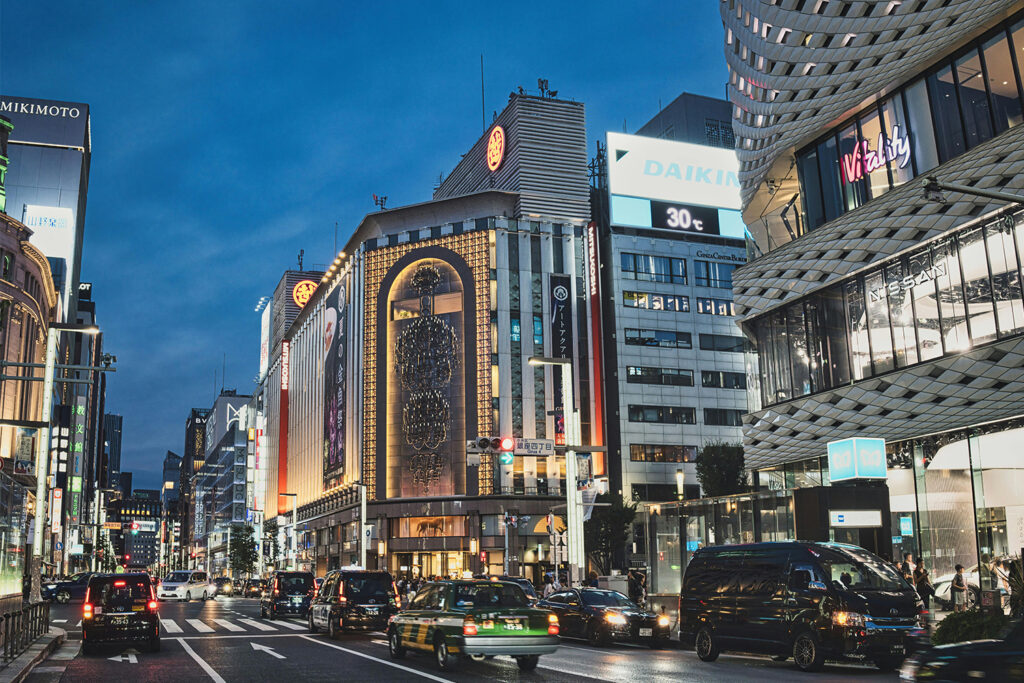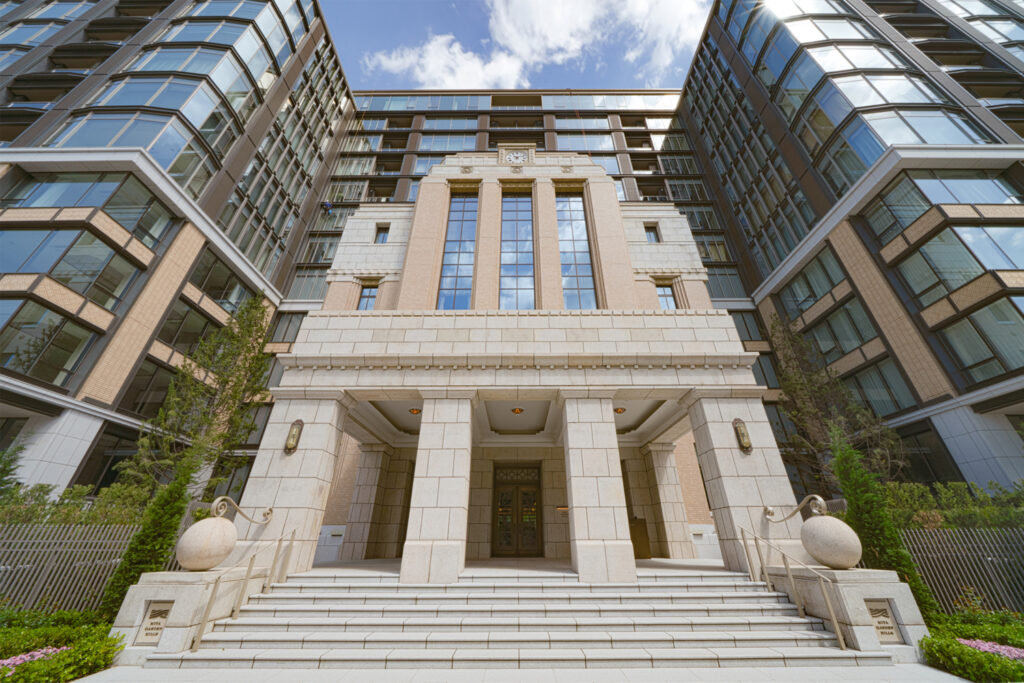
The Yamanote Line is one of Tokyo’s busiest train lines, connecting the most important urban centres of Japan’s capital with 29 stations (station number 30, is due to open in Spring 2020). It also more or less encircles all 5 central wards of Tokyo: Shinjuku, Shibuya, Minato, Chiyoda, and Chuo. Not surprisingly some of the most luxurious (and pricy) estates are located within those 5 central wards and it’s not a secret that location plays a crucial role in real estate investment, especially in a city so densely urbanized as Tokyo. Depending on whether you are investing inside or outside the Yamanote Line loop, investors should expect significant differences in property prices, potential ROI, or even investment safety.
Real Estate in Tokyo: Factors to Consider
There are obviously many factors to consider before a successful real estate investment in Tokyo. The first concern that many potential investors face is the legal restrictions and norms that apply to purchasing and selling property in Japan. Fortunately, unlike elsewhere in Asia there are no restrictions on tenure and foreign investors enjoy the same rights and privileges as domestic ones.
See our Guide to Buying a Home in Tokyo, or contact us directly.
Demographics
Before rushing into an investment it’s always good to collect and analyze as much data as possible to ensure the highest potential ROI. The first important factor to consider is that Tokyo is one of the very few prefectures in Japan where the population keeps increasing every year. On top of that, according to the Nomura Research Institute, almost 50% of this growth can be accounted to the inflow of non-Japanese. Needless to say, all those people need new homes or apartments and many of the foreigners are high-net-worth-individuals looking for luxurious, up-scale apartments near the city centre.
Market Trends
Real estate market trends tend to be the most unpredictable and ever-changing factor influencing investment decisions. According to the Japanese Ministry of Land, Infrastructure, Transport, and Tourism in 2019 the average land price for Tokyo has seen a 4.2% price increase from 2018 for all types of zoning. The market has been stable since 2008 and provides good cash-flow opportunities, especially when considered alongside low-interest rates.
Location
So now, with that out of the way, it’s time to talk about one of the absolute most important factor of any successful real estate investment, no matter if in Tokyo or anywhere else in the world: location. In 8 out of Tokyo’s 23 wards, the population is predicted to rise by more than 10% in the next 25 years. Not surprisingly the top 3 of those wards are located within the Yamanote Line loop: Chuo, Chiyoda, and Minato – all expecting over 30% population growth till 2045.
Housing Japan offers an extensive range of listings in the best locations around Tokyo. Regardless if you are looking for property to buy or sell, you will be able to find a perfect investment opportunity there.
Investing Inside the Yamanote Line Loop

Because of the convenience of the Yamanote Line – being able to quickly reach all the vital urban centres of Tokyo and the increasing number of development projects taking place either inside the loop or around the major stations – it became a de facto border, marking the areas with good potential ROI. Still, there are many pros and cons to investing both on the inside and on the outside of the Yamanote Line loop.
Pros of Investing Inside the Loop
Major factors in favour of investing inside the loop include:
- High potential ROI
- Plenty of new development projects to choose from for investment
- Low risk of vacancy
- A constant increase in the property value
- Estates attracting high net worth foreign individuals
If the potential investor has the necessary funds, choosing to allocate the money in real estate within the Yamanote Line loop might be an excellent decision.
First of all, there are significantly more development projects taking place in the centre of Tokyo – creating a great pool of potential investments to choose from and an ability to diversify your portfolio. This fact, together with a constant, robust increase in property value within the loop can result in high potential ROI.
Another important factor is the constant inflow of new residents. This results in low vacancy risks and together with upward rent trends (up to 50% in some areas) in the 5 central wards, can help investors see large returns and financial gains. In general, low vacancy risks mean a safer investment.
For maximizing return on property investment, effective and efficient property management is necessary. Housing Japan has helped manage hundreds of properties: including financial management, property maintenance, short and long-term renting.
One more key benefit to investing in a ward inside the Yamanote Line loop is to tap into the inflow of high net worth foreigners looking for luxury properties in the centre of Tokyo. Possibly the best area to capitalize on this trend would be Minato ward.
There are many western-style housing options and various services and business centres geared to foreigners, making it a perfect choice for most ex-pat professionals and their families. The majority of foreign residents living in Minato are concentrated in iconic, high-end neighbourhoods like Akasaka, Aoyama, Azabu, Roppongi, or Omotesando.
The reason why those areas are in such high demand among wealthy foreigners is the convenient proximity of international schools, hospitals, governmental and public institutions offering employment to foreigners and nightlife in the Roppongi district. This results in over 80% of ex-pats who have a job and a family in Tokyo to move into this area.
Some other lucrative areas near Yamanote Line include:
- Meguro (the most popular residential area among the Yamanote Line stations)
- Ebisu (frequently rated the number one desired place to live by Japanese Tokyoites)
- Daikanyama and Bancho (two historical, traditional, high-end areas popular with wealthy Japanese residents)
- Shoto (10 minutes from Shibuya station, very high-end residential properties, more spacious and elegant than in the city centre)
- Toranomon (lots of redevelopment contracts being carried out by Mori Building, in the coming years this area can become as popular and in high demand as Roppongi)
Feel free to search our listings for perfect investment opportunities in iconic neighbourhoods around the Tokyo central wards.
Cons of Investing Inside the Loop
The main disadvantages of investing inside the loop include:
- Higher prices of land and buildings (compared to outside the loop)
- Longer timeline to yielding a return
Every investor needs to be aware that the prices of both land and buildings in the centre of Tokyo are relatively high, compared to areas outside of the Yamanote Line loop and the trend keeps going up. Properties in high-demand areas especially require substantial liquidity and reserve funds for investment. Even considering the higher occupancy rates and higher rents – this factor can result in a long time waiting for the return on investment. However, it’s important to understand that Tokyo, considering its size and presence on a global scale is still a remarkably low-priced market compared to other major city centres around the world – making it a stunningly attractive investment for the savvy investor.
Investing Outside the Yamanote Line Loop

Pros of Investing Outside the Loop
Major factors in favour of investing outside the loop include:
- Lower prices of land and buildings
- Decent increase in population (but not as good in central wards)
- Capitalizing on the trend of people moving to the suburbs
- Shorter timeline to your return on investment
The 18 wards outside the Yamanote Line loop offer lower prices of land and buildings with a decent volume of new resident inflow, which although not as high as in the central wards can yield a solid return on real estate investment. Another factor is the popular trend among families moving to bigger houses and apartments located within an hour’s commute to the Tokyo centre – enjoying more space and peaceful neighbourhoods while staying relatively close to their place of work. Investing in development projects in the suburban wards outside of the Yamanote Line may allow to capitalize on this trend.
Cons of Investing Outside the Loop
Main disadvantages of investing outside the loop include:
- The slower increase in the property value
- Higher risk of vacancy
- Lower potential ROI
he value of the properties outside of the Yamanote Line loop can be considered both an advantage and a disadvantage from the perspective of a potential investor. The positive side is that land and buildings can be purchased cheaper, however, they also appreciate in value slower than if they would be localized near the centre of Tokyo. This can result in lower potential ROI. Also, the lower inflow of new residents can result potentially longer vacancies – making it harder to generate income from investment in properties for short- and long-term rent.
If you have invested in property in Tokyo, and want to stay on top of your real estate performance insights, see our Property Investment Tracker.
Going Deeper Than Other Investors

Regardless of whether you plan to invest inside or outside the Yamanote Line loop, proper research and due diligence are always crucial. To ensure the best possible ROI and safety of the investment, the more data and market insights you are able to analyze, the better. At Housing Japan we understand that because of the volatile nature of the real estate market and uniqueness of trends within Tokyo – it’s often hard to make the final decision of allocating money in a property. Our best advice would be to always have an experienced, professional advisor on your side, that will guide you towards the best possible investment. Housing Japan stays on top of newest market data and research, guiding investors with up-to-date vacancy ratios, rent trends by area, new development projects and much more to help you filter down the right area to invest.

Editor’s Note: Shirley is Sales Director for Housing Japan. She has sold billions of yen of real estate and arguably has the highest client satisfaction rating in the industry. Shirley writes a regular column for Housing Japan readers to help illustrate common challenges buyers and sellers have when trading Tokyo residential property.











